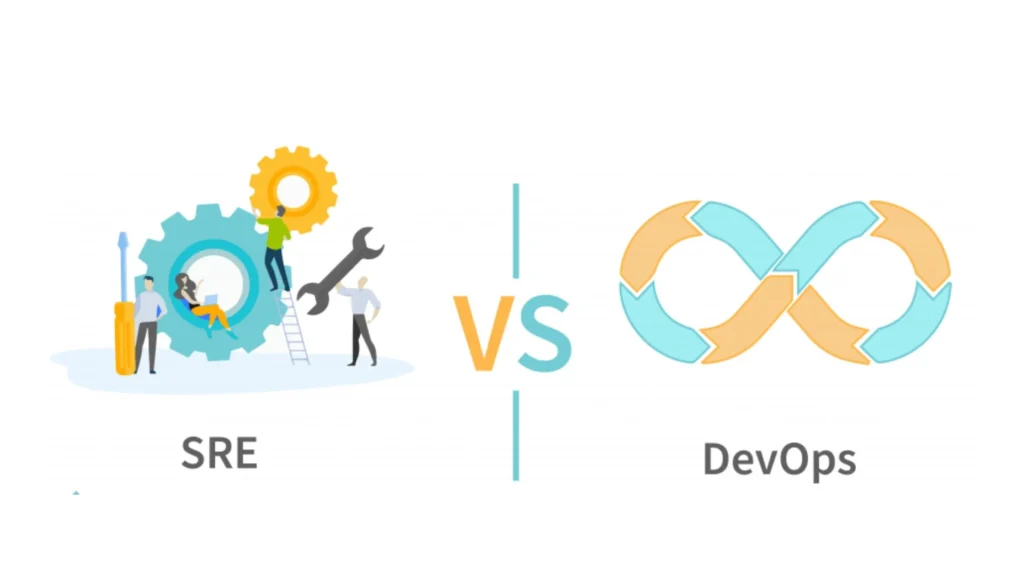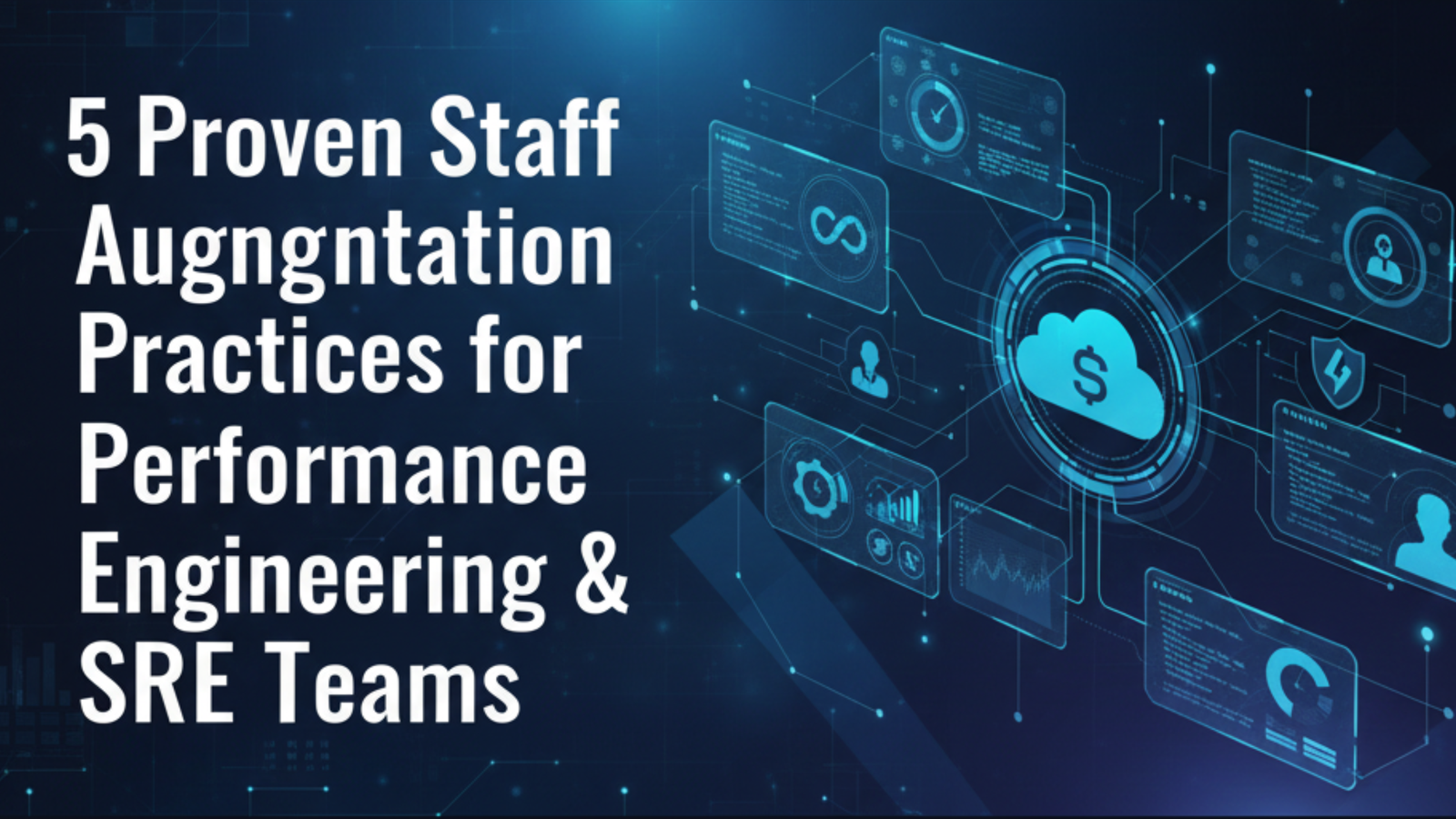You need to be online always, no matter what. Users expect websites and apps to work all the time, without hiccups. One second of downtime can lead to frustrated users, lost revenue, and a bad reputation, and you literally don’t want that. So, how do tech teams keep everything running smoothly even when traffic spikes, bugs sneak in, or systems evolve?
Well, it is only because of the help of Site Reliability Engineering (SRE). If DevOps is about speed and agility, SRE is about stability and trust. Together, they build systems that are not just fast but also highly reliable. Let’s dive deep into the principle of Site Reliability Engineering (SRE), why it’s gaining momentum, and how it helps modern DevOps teams reduce chaos and increase uptime.
How SRE Improved Uptime and Reduces Chaotic Stress?
Reliability isn’t just a bonus anymore. It’s a core part of your brand promise. When a service crashes or slows down, users notice, and they don’t always come back.
SRE is like a guardian angel for your tech stack. It brings together software engineering and operations to improve system uptime, automate incident response, and reduce the manual work that leads to human error. With an SRE playbook, teams get a structured approach to tackling incidents, ensuring they don’t just fix issues but also prevent them.
At Avekshaa Technologies, we know that infrastructure reliability is essential for business success. Our performance-focused solutions help clients proactively manage and improve system health using approaches like SRE.
What Is Site Reliability Engineering?
Site Reliability Engineering started at Google in the early 2000s as a way to solve a growing problem: how to manage large-scale systems without constant firefighting. The idea was to apply software engineering principles to operations work, writing code to manage infrastructure, rather than relying solely on manual processes.
SRE is not just a role, it’s a culture. It combines monitoring, automation, and resilience thinking to make sure that systems stay available and can recover quickly when things go wrong.
Origin, Concepts, Key Goals
The SRE approach was born when Google asked: “What if we treated operations like a software problem?” Instead of relying on traditional system administrators, they built a team of engineers whose job was to keep the system running, but with engineering tools and automation.
Key goals of SRE include:
- Minimizing downtime
- Reducing toil (repetitive manual tasks)
- Using data to guide reliability efforts
- Balancing innovation with stability (using error budgets, which we’ll get into soon)
SRE makes sure that developers can ship features quickly without compromising reliability.
Key Concepts in SRE
Understanding SRE means understanding its four building blocks: SLIs, SLOs, error budgets, and toil.
- SLIs (Service Level Indicators): These are the actual metrics you track, such as latency, error rate, and uptime. If you’re measuring it, it’s an SLI.
- SLOs (Service Level Objectives): These are your goals for the SLIs. For example, “99.9% uptime” or “95% of requests should complete in under 200ms.”
- Error Budgets: This is how much unreliability you’re allowed before slowing down new features. It creates a balance between shipping fast and keeping systems stable.
- Toil: Repetitive, manual tasks that don’t scale are considered “toil.” SRE teams work to eliminate this with automation and smart tools.
By defining these clearly, SRE gives your team the confidence to innovate without breaking things.
What’s the Difference Between SRE vs DevOps?
While DevOps focuses on collaboration and faster software delivery, SRE adds reliability to the mix.
| Feature | DevOps | SRE |
| Primary focus | Speed & collaboration | Reliability & automation |
| Approach | Cultural movement | Engineering discipline |
| Key tools | CI/CD, containers | SLIs, SLOs, error budgets |
| Main goal | Shorten the development lifecycle | Maintain uptime and performance |
So, SRE vs DevOps isn’t a battle. Think of them as two pieces of the same puzzle. You need both to build high-performance, reliable digital experiences.
Why Enterprises Are Investing in SRE?
Businesses in India, the USA, and the UK are realizing that every second of downtime equals lost money and lost trust. That’s why they’re adopting SRE: to reduce incidents, speed up recovery, and scale services with confidence.
Benefits include:
- Faster incident response through automation
- Better decision-making using real-time data
- Reduced engineering burnout by removing toil
- Improved customer satisfaction with consistent uptime
With incident response automation and proactive monitoring, SRE helps enterprises transform chaos into control.
Building an SRE Practice: Tools & Roles
Starting an SRE practice doesn’t mean hiring a brand-new team. You can begin with the people you already have.
Common roles in an SRE team:
- SRE Engineer – Builds tools, writes automation, defines SLOs.
- Incident Commander – Leads response during outages.
- Monitoring Specialist – Ensures metrics and alerts are in place.
Common tools in SRE:
- Prometheus (monitoring)
- Grafana (dashboards)
- PagerDuty (alerting)
- Terraform & Ansible (infrastructure as code)
But tools alone won’t help. You need a mindset shift. That’s where Avekshaa comes in — helping clients build a downtime reduction strategy and enabling scaling applications with SRE principles that are tailored to each system’s architecture.
How We Help Clients Build High-Reliability Systems?
At Avekshaa, we bring years of experience in performance optimization, application reliability, and real-time monitoring. Whether you’re launching a new product or scaling existing systems, we help embed reliability engineering into your development pipeline.
Our approach combines:
- Deep performance analytics
- Custom SLO design
- Error budget policies
- Predictive insights to prevent outages before they occur
Our focus isn’t just on fixing problems. It’s on building systems that don’t break in the first place.
Ready to Take Reliability Seriously?
If you’re tired of firefighting outages or struggling to meet customer expectations for uptime, it’s time to consider SRE as your next big move. Let Avekshaa help you move from reactive support to proactive resilience.
Frequently Asked Questions (FAQs)
1. What is the key role of an SRE in a tech team?
An SRE ensures the system is reliable, scalable, and fast by combining software engineering with IT operations. They automate tasks, monitor systems, and manage incidents efficiently.
2. How is SRE different from DevOps?
DevOps is about speed and collaboration, while SRE focuses on reliability and reducing operational risk using engineering tools and error budgets.
3. Can SRE practices improve uptime and reliability?
Yes. SRE practices help teams set goals (SLOs), measure actual performance (SLIs), and automate responses, all of which significantly reduce downtime.
4. What tools do SREs commonly use?
Common tools include Prometheus, Grafana, PagerDuty, and Terraform for monitoring, alerting, and infrastructure automation.
5. How can a business start implementing SRE practices?
Start by defining SLIs and SLOs, identifying areas of toil, and building a small team that focuses on automation and reliability improvements. Partnering with firms like Avekshaa can fast-track your journey.


